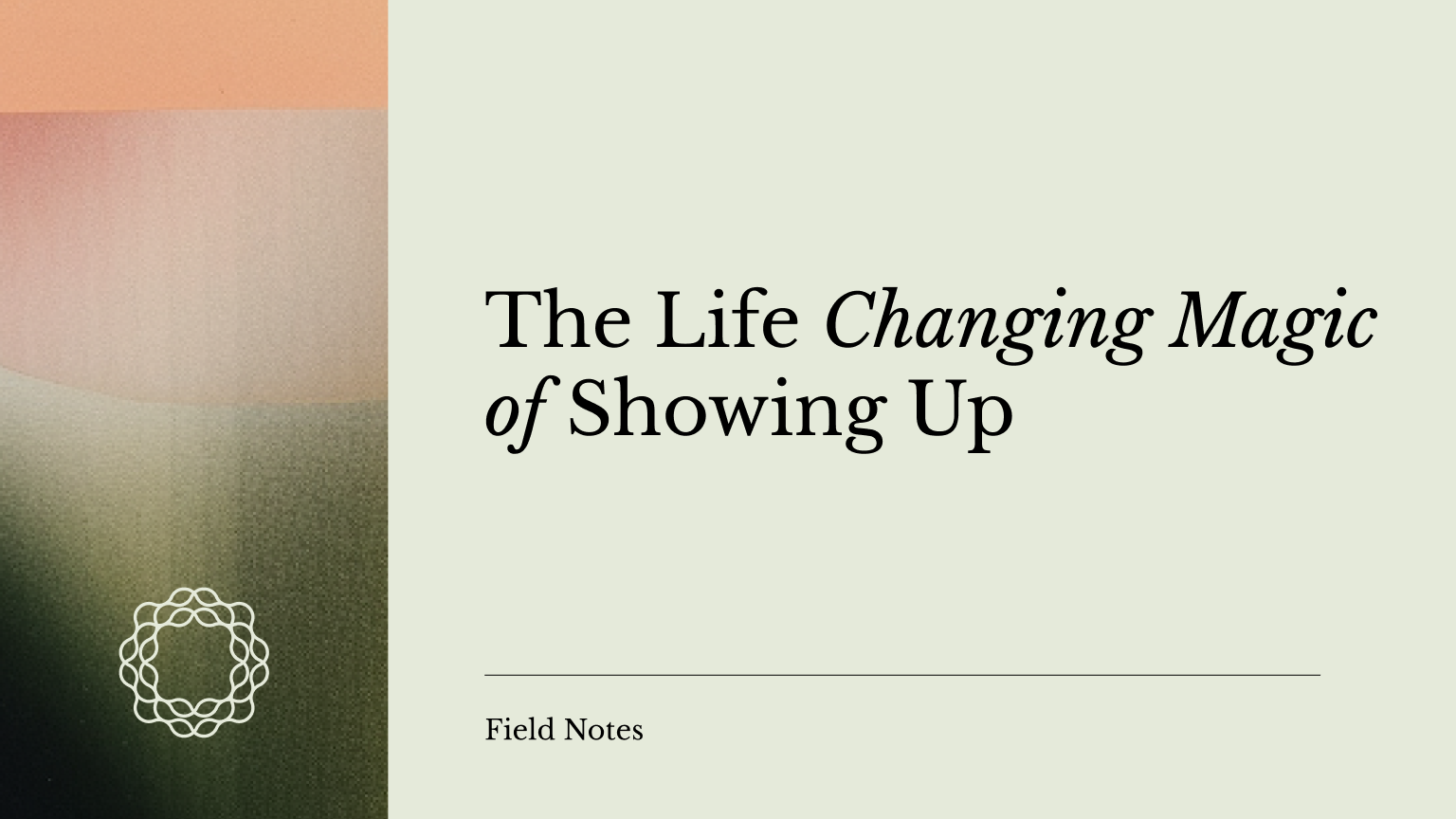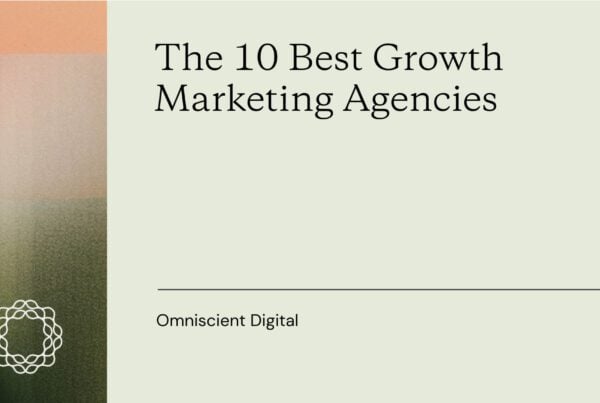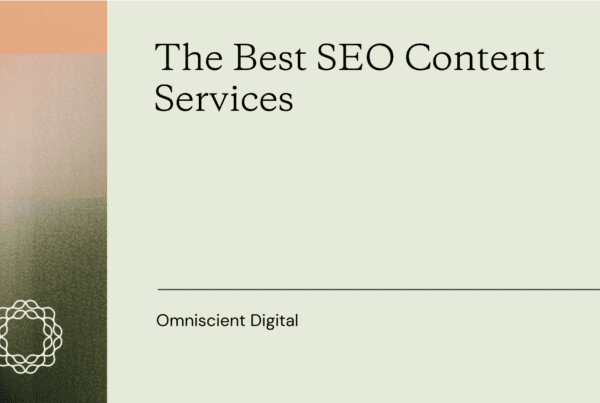
In a world obsessed with breakthroughs and big ideas, it’s easy to forget that most success doesn’t come from genius but from consistency. The rarest skill isn’t brilliance or prescience, it’s simply showing up, day after day, long enough to let compounding do its work.
This is true in the most literal sense: putting in steady effort yields better results than sporadic bursts of inspiration. But it’s also how most things in life—SEO, trust, mastery—actually grow. Not in leaps and bounds, but brick by brick, layering effort upon effort until the sum is far greater than its parts.
Getting the Basics Right: God is in the Details
There’s an implicit belief, especially in marketing, that success requires cleverness. That winning means discovering the hidden shortcut, the growth hack, the revolutionary insight no one else has seen.
But often, the opposite is true. And to the extent that it is a hidden shortcut, growth hack, or revolutionary insight that unlocks business success, those are often euphemistically tripped over in the banal routine of your daily walk to chop wood and carry water.
It’s my opinion that we’d benefit immensely if more people focused on getting the basics right and doing so consistently.
At Omniscient, we run an organic growth agency that prides itself on being at the forefront of innovation (AI, automation, novel frameworks, etc.)
But I think the reason our clients trust us and like us is not the ability to dazzle them with our intelligence (I’ve tried – that often falls quite flat) – it’s our obsession with the fundamentals, and even more so, the details.
That means:
- Sending clear, structured weekly updates, ensuring no one is ever left wondering about progress or action items.
- Preparing detailed, thoughtful agendas for meetings, making them not just useful but enjoyable. My explicit goal is to make our meetings something that clients actually look forward to attending.
- Checking deliverables for errors, not out of perfectionism, but because attention to detail signals respect to the work and dignity.
- Knowing the data inside and out, even if we don’t surface every detail in a call. Deeply, deeply understanding the business context of our engagements.
It’s tempting to overlook these things in pursuit of bigger, flashier work, frameworks, models, and experiments. But over time, the basics, executed well, over and over, create an experience that no amount of one-off brilliance can replace.
As my co-founder David put it in our podcast discussion (referencing Unreasonable Hospitality):
“There’s the black and white stuff you have to get right—the table stakes. And then there’s the color you add. The memorable experience isn’t just getting the right dish to the right table. It’s the human touch around it.”
Many are lurching forward for a shiny new piece of back office technology and not thinking about the “color,” let alone the black-and-white fundamentals.
No matter how creative the amuse-bouche is, if your glass of water (or wine) is constantly empty and no waitstaff is even looking at you, it’s going to be a frustrating experience.
Trust Compounds Faster Than Genius
It’s a simple principle: do what you say you’ll do, when you say you’ll do it.
Yet, in a world where missed deadlines and overpromises are the norm, basic reliability becomes a competitive advantage.
I’ve seen it over and over:
- High-energy, high-intelligence people are apt to crash out without developing (and EQ).
- Many ambitious over-promisers crash and burn (such that it’s a recurring theme in literature).
- But conscientious people, the ones who follow through, who communicate when they’re behind, who take ownership, tend to continue rising, learning, and growing, typically developing requisite skills, social intelligence, and stamina to achieve whatever they want..
Raw intelligence and hustle are valuable, but they mean little without reliability. And while conscientiousness might not get as much fanfare as ambition, I’ve never seen a truly conscientious person fail in the long run. But I’ve seen plenty of ambitious people flame out because they couldn’t deliver on their own commitments.
I, myself, in my earlier career, often lacked the organization and conscientiousness and tried to make up for it with wit and intelligence. It never worked out well for me. What worked well was when I subjugated my ego and just sat down to get my work done.
If there’s one thing that will take you further than talent, it’s trust. And trust is built not through grand gestures, but through the quiet, repeated act of showing up.
The Cycle of Accelerated Returns: Why Mastery Gets Easier Over Time
You’ve heard of the 10,000-hour rule: the idea that mastery is a function of focused time spent practicing.
Debate over the number and principle aside, it’s a fairly obvious idea that being world class at something requires a lot of focused practice.
- Bill Gates coded for thousands of hours before Microsoft.
- The Beatles played grueling, eight-hour sets in Hamburg long before they became legends.
- Picasso didn’t create a few masterpieces—he painted 13,500 paintings and created 50,000 works of art.
At first, practice feels hard. You’re consciously incompetent, painfully aware of what you don’t know, of how far you have to go. Your fingers feel awkward traipsing across the piano keys.
But if you push through the discomfort, something flips. Gradually (and then seemingly suddenly), not practicing feels harder than practicing.
Writing is like that for me. I’ve written so much, so often, that now, I can’t not write.
The same is true of any skill. The beginning is awkward and slow, but if you show up long enough, the effort itself becomes effortless.
As Robert Greene wrote in The Daily Laws:
“The more we practice, the easier it becomes. Reaching this cycle of accelerated returns is the goal you must set for yourself.”
The irony of mastery is that the hardest part is the beginning. But most people quit before they ever see the upside.
Threshold Effects in Marketing: Minimum Viable Action
You don’t lift weights once and get stronger. You don’t post on LinkedIn once and build an audience. You don’t publish one article and expect SEO traction.
There’s a threshold you have to cross before results even start to show.
Posting once a month on LinkedIn? No impact.
- Once a week? Better, but slow.
- 2-4x per week? Now you’re playing the game.
- 2-4X per day? Mmmm, perhaps consider dialing it back and building something in silence?
A threshold effect is when nothing happens…until suddenly, everything does.
- Water is just hot until it reaches 100°C, then it becomes steam.
- Muscles don’t grow from one workout, but hit your threshold, and they explode.
- A startup’s first 10 customers are a grind, then one day, momentum (WoM, network effects, channel economics, etc.) kicks in.
There’s, of course, also a point of diminishing returns with most things. Working out twice a day is apt to injure you with little effect on muscle growth. Publishing 1000 articles a month is likely a bloated and costly endeavor that will drown your team in a useless endeavor.
But most are so gunshy about committing to a given cadence and runway that this is a champagne problem they’ll never experience.
This idea of threshold effects is, in some part, what inspired the Surround Sound SEO strategy when I was at HubSpot – the idea that to be ubiquitous in product discovery SERPs had outsized benefits to simply ranking your own page.
There’s a bar, and it’s not obvious where it is in different contexts, where something rises up to your conscious awareness. Maybe you hear a book mentioned once, and maybe if the person who recommended it is a very trustworthy source, you’ll go buy that book.
But often, you need to hear it a few times from different people before you spend the time and effort to read it.
The same is true in brand marketing, Surround Sound SEO, marketing in general. There’s a threshold, above which you see effects, and below which you see nothing. It’s important to discover that line, particularly when designing minimum viable experiments to “prove out” a new tactic or channel.
Most marketing channels work this way. Show up sporadically, and you’ll never reach the threshold. Stay consistent, and compounding takes care of the rest (or at least you’ll truly learn whether or not it works).
The Myth of Picking Winners: Why Tinkering Beats Predictions
People love to believe they can predict success in advance.
There’s a whole genre of data broadcasting that springs from analyzing charts that look like power laws and coming up with the conclusion that you should focus exclusively on the most impactful 1-5% of activities.
If you’ve looked under the hood at a few analytics setups, you’ve already realized that most traffic by page charts look like this:

So what’s the popular conclusion? That we focus on choosing the right keywords that will bring in 80% of the traffic and conversions. That we focus on choosing the experiments that will increase conversion rates by 50%. That we focus on only investing in the startups that will return 20X my capital.
And while I do believe there are ways you can increase the expected value or probability of success, I don’t believe that we’re great at picking winners before they win.
It’s not just in business, but life in general benefits from convex tinkering as opposed to prescient selection. Think about relationships. You’ll probably marry one person in your lifetime (maybe two).
But before that happens, you’ll go to countless parties, join book clubs, hit the gym, maybe even try a dating app or two. You don’t walk into a dinner party expecting to meet your future spouse. But you know that if you keep showing up, the probability increases. Some nights will be duds. Others will be fun but forgettable. And one, eventually, will change your life.
The takeaway isn’t to, in advance, pick the exact party where you will meet your spouse, but rather to increase the surface area of your luck by getting more potential exposure (and going to more book clubs, dinner parties, or speed dating events).
This dynamic—low downside, high upside bets—applies well in business, marketing, investing, and nearly every other field.
So what’s the best strategy? In some sense, it is to take a lot of bets (and probably to barbell your allocation of investments). But taking bets is expensive, so a good lever to pull is to reduce the cost of each bet (or at least the reversibility of the decision). Experiments are a great example of this. If you do not have the proper infrastructure, it could take weeks or months to set up a simple experiment that may or may not improve your metric. On an expected value basis, this is a bad bet to make.
But if you can invest in infrastructure that allows for faster development and analysis cycles, then you can run more experiments in the same time frame, multiplying your chances that one of them will be valuable to your business.
This is how I approach marketing for our agency. When you run a service business, you can’t force someone to be “in-market” for an agency at the exact moment you meet them. All you can do is ensure that when they are in the market, they think of you first. That means maximizing exposure—conference speaking, cold email, LinkedIn, webinars—knowing that you can’t predict which touchpoint will be the one that lands a client. I don’t know which LinkedIn post will get the right person’s attention at the right time. But I do know that the cost of writing is low, and the upside is huge. So I maximize my “surface area of luck” by posting daily. And so does my team.
The Underrated Factor: Personal Fit
There’s a final, overlooked piece to all of this: what can you stick with long enough to let it work?
For us, our podcast is a great example of this longevity. We’ve done 250+ episodes. I don’t know the exact statistics, and I’m too lazy to look it up, but I believe most podcasts fail to make it past 5-10 episodes.
For me, I love talking to smart people. I would do it whether people listened or not (and I do – most of my interesting conversations are not broadcasted). This personal interest, passion, and curiosity let me push past the awkward first episodes, improve my skill, and eventually, drive a shitload (the official term) of business with the channel.
If you don’t enjoy the thing you’re showing up for, you won’t last long enough to see the results.
This doesn’t need to be a founder / channel fit, by the way.
I recently spoke to a marketing leader who told me she had a marketer on her team who was obsessed with video and building YouTube into a high performing acquisition channel. And…it paid off. Crushes for them. And now, this video success is parlaying into outsized LLM referrals and leads for them. Gotta have some level of conviction for these compounding channels to really start paying off.
This newsletter is another great example. No matter what happens in a given week, I know that because I’ve committed to a weekly cadence, I’ll find pockets of time to write it. Now, we’re 100+ in, and we’ve not only been able to directly attribute it to revenue, but it’s opened up a ton of serendipitous opportunities as well.
Point is, it would be very nice if there were a shortcut.
But the real answer is simpler than people want to admit: Show up. Do the basics. Repeat.
Do this long enough, and you won’t have to worry about being the smartest, most revolutionary person in the room.
One day, you just will be.
Want more insights like this? Subscribe to our Field Notes.


